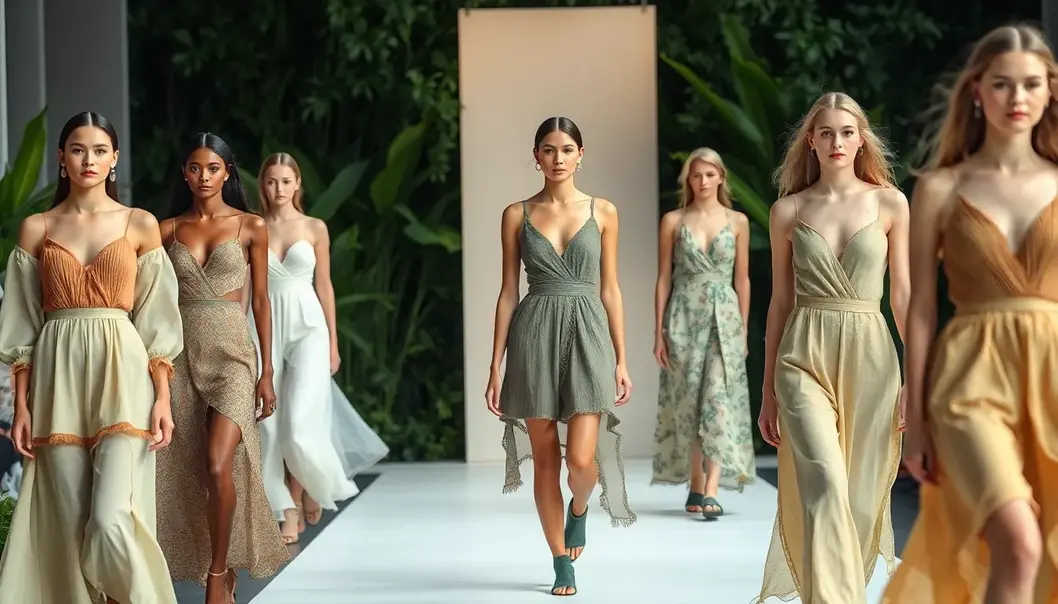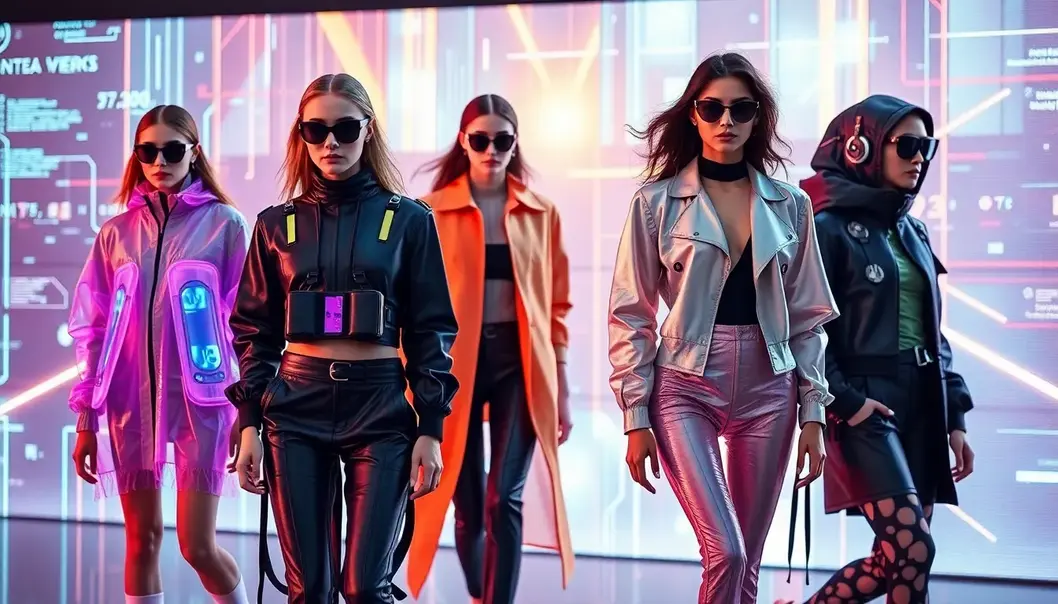With 2025 on the horizon, fashion continues to evolve in a landscape driven by innovation and individuality. Fashion enthusiasts and trend analysts are witnessing a dynamic convergence of technology, sustainability, and cultural diversities reshaping wardrobes globally. The intersection of these elements is not only bringing about stylistic advancements but is also setting a precedent for thoughtful consumption and personal expression. As we approach this future era of style, a renewed emphasis on inclusivity and adaptability emerges, showcasing how clothing becomes more than just a fashion statement but a narrative of the epoch. Unveiling the trends of 2025, we delve into the avant-garde territories that the fashion world is embracing.
The Rise of Tech-Infused Wearables

As the fashion industry steps into 2025, the fusion of technology with style reaches unprecedented heights, transforming the way individuals interact with their clothing. Tech-infused wearables are at the forefront of this evolution, integrating smart fabrics and augmented reality (AR) designs to produce a new breed of fashion that is both interactive and adaptive.
Imagine textiles that change color based on user interaction or mood. This isn’t science fiction anymore; it’s becoming a hallmark of cutting-edge fashion. Advanced materials now respond to biofeedback or touch, unlocking a world where every garment speaks uniquely to its wearer. Brands are experimenting with chromatic textiles, enabling a seamless transition in hues to match the time of day or personal vibe, providing a canvas for sartorial expression like never before.
Moreover, adaptive clothing is gaining traction, offering wearers an augmented experience by reacting dynamically to environmental conditions. Jackets that inflate for warmth or deflate for lightness in cooler temperatures are redefining seasonal wardrobes. Such innovations enhance comfort while harmonizing design with function. Smart textiles that monitor body temperature or adjust ventilation ensure that fashion caters to individual needs with unparalleled precision.
Intelligent accessories are also coming to the forefront, revolutionizing functionality. Beyond mere aesthetics, jewelry and watches now feature augmented reality displays, projecting notifications or virtual designs directly from connected devices. These smart accessories often incorporate biometric sensors, enabling them to perform tasks that range from health monitoring to unlocking digital content. By merging practicality with elegance, these items push the boundaries of traditional design.
Artificial Intelligence (AI) plays a crucial role in this landscape, curating personalized fashion experiences that transcend the conventional parameters of design. Leveraging data from user preferences, AI systems can suggest outfits that match personal style, body type, and even upcoming social events. The sophisticated algorithms underpinning these systems allow for an exploration of fashion that is as inventive as it is intimate.
This convergence of technology and style doesn’t just introduce novelties; it challenges designers to rethink the essence of fashion. Wearables imbued with technology redefine traditional paradigms, questioning how fashion can further integrate into daily life. As this trend unfolds, it sets the stage for a future where clothing not only reflects individual identity but actively adapts to it, highlighting the ongoing transformation of personal expression and utility in fashion.
Sustainability Meets High Fashion

In 2025, sustainability has moved from a trend to a core pillar within high fashion. The industry’s elite are committing to eco-friendly practices, revolutionizing how garments are conceptualized, manufactured, and disposed of. The abundance of eco-friendly materials has been a game changer. Recycled polyester, organic cotton, and innovative textiles crafted from seaweed and agricultural waste are not just experimental novelties; they have become commonplace in luxury collections. These materials reduce environmental impact and imbue designs with unexpected textures and aesthetic dimensions.
Circular fashion is gaining traction, with brands focusing on lifecycle thinking—designing products for disassembly and recyclability. Initiatives include take-back programs and resale collaborations, enabling garments to be repurposed at the end of their life. This not only minimizes waste but also reshapes consumer purchase behaviors, with a growing emphasis on quality over quantity.
Upcycling is at the forefront of this movement, with designers reimagining pre-existing fabrics into avant-garde creations. Upcycling extends the lifespan of materials and celebrates the artistry within constraints, fostering creativity in unexpected ways. Similarly, biodegradable fabrics made from resources like mushrooms and fruit skins are pushing the boundaries of material science, offering sustainable alternatives that align with luxury aesthetics.
Prestigious fashion houses are now creating entire collections centered around sustainability, demonstrating that eco-conscious design can be synonymous with elegance and innovation. These collections are celebrated not only for their environmental sensitivity but also for their artistry and sophistication, proving that style and sustainability can coexist without compromise.
Consumer behavior is also evolving, with a notable shift towards ethical production. Shoppers now demand transparency regarding sourcing, manufacturing, and labor practices. This change is not merely a niche movement; it influences mainstream fashion, redefining what it means to be stylish in 2025. As consumers become more educated about their ecological impact, their purchasing choices become a powerful driver for industry change, anchoring sustainability firmly within the narrative of high fashion.
The journey towards sustainable fashion is not without its challenges, but the momentum is undeniable. As brands and consumers collectively prioritize the planet, the industry stands at the cusp of a transformation, where high fashion’s future is undeniably green.
Final words
As 2025 draws near, the fashion landscape embraces technological advancements and sustainable practices, transforming our wardrobes into reflections of innovation and responsibility. This intersection of technology and conscious design not only enhances personal expression but also bolsters the ethical dimensions of fashion. The future of style promises a more inclusive, adaptable, and thoughtful approach to how we perceive and engage with clothing.
Stay ahead in the fashion world by exploring cutting-edge designs from top designers. Subscribe now to get exclusive trend insights and style updates.
Learn more: https://fashionforward2025.com/subscribe
About us
Fashion Forward 2025 specializes in bringing the latest insights from the world of fashion, offering trend analysis, exclusive designer collections, and personalized style consultations to fashion enthusiasts and industry experts alike.



